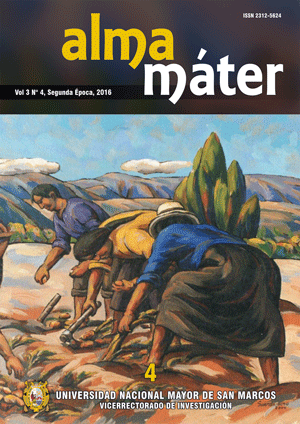IMPACT OF MONETARY POLICY ON ECONOMIC CYCLES. PERU 2002-2014
Keywords:
Gross domestic product, real interest rates, real exchange rate, economic cycles.Abstract
This paper studies the problem between Monetary Policy and Economic Cycles in the Peruvian economy during 2002- 2014. To do an econometric model that allows face the problems of the impact of monetary policy on economic cycles proposed. This model using VAR econometric technique that evaluates the effects of changes in the real interest rate, the real exchange rate and terms of trade in the phases of boom and bust of Gross Domestic Product GDP is estimated; and the hypothesis is tested “booms and busts of GDP of varying duration are caused by monetary policy”. Thus, for the period 2002-2014; the estimates show that the evolution of interest rate monetary policy, the real exchange rate and terms of trade influenced the Peruvian economic cycle. So the contribution to the study of the Monetary and Economic Cycles is that monetary policy by controlling monetary aggregates and Reference Interest Rate Economic cycles generated during 2002-2014; and that economic cycles will be prevented by changes in monetary aggregates that match variation of GDP; and changes in benchmark interest rates to match changes in the interest rate on the capital market. Achievement of this research is expressed in terms of demonstrating that maintain production growth through expansionary monetary policy (maintaining low interest rate reference) has generated a reiteration of economic cycles, ie, a transit of a boom period to a period of recession, which will stimulate a new expansive use of monetary policyDownloads
Published
Issue
Section
License
Copyright (c) 2016 Pablo Hermenegildo Rivas Santos

This work is licensed under a Creative Commons Attribution-NonCommercial-ShareAlike 4.0 International License.

Alma máter segunda época by Vicerrectorado de Investigación y Posgrado is licensed under a Creative Commons Reconocimiento-NoComercial-CompartirIgual 4.0 Internacional License.
Creado a partir de la obra en http://revistasinvestigacion.unmsm.edu.pe/index.php/alma/index.
AUTHORS RETAIN THEIR RIGHTS:
a. Authors retain their trade mark rights and patent, and also on any process or procedure described in the article.
b. Authors retain their right to share, copy, distribute, perform and publicly communicate their article (eg, to place their article in an institutional repository or publish it in a book), with an acknowledgment of its initial publication in Alma máter segunda época.
c. Authors retain theirs right to make a subsequent publication of their work, to use the article or any part thereof (eg a compilation of his papers, lecture notes, thesis, or a book), always indicating the source of publication (the originator of the work, journal, volume, number and date).



